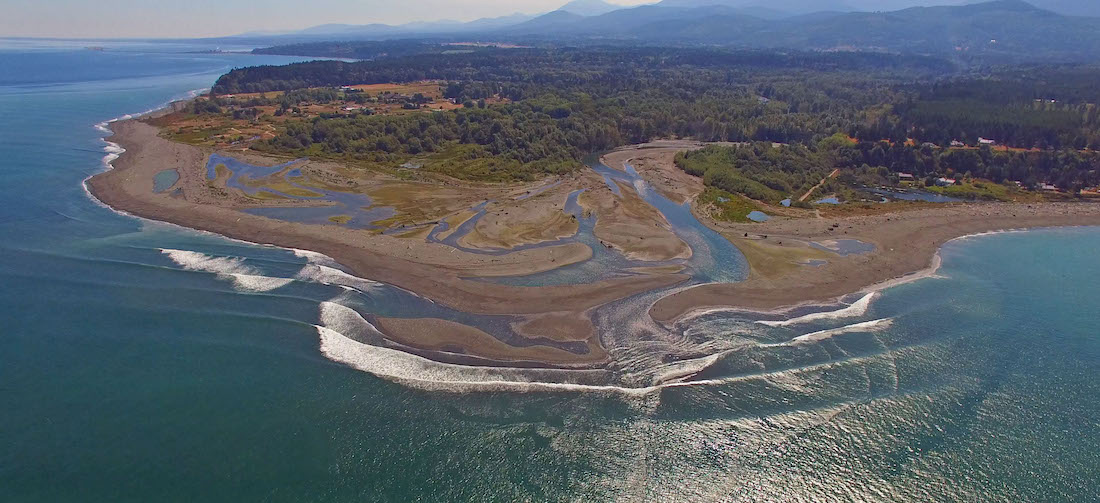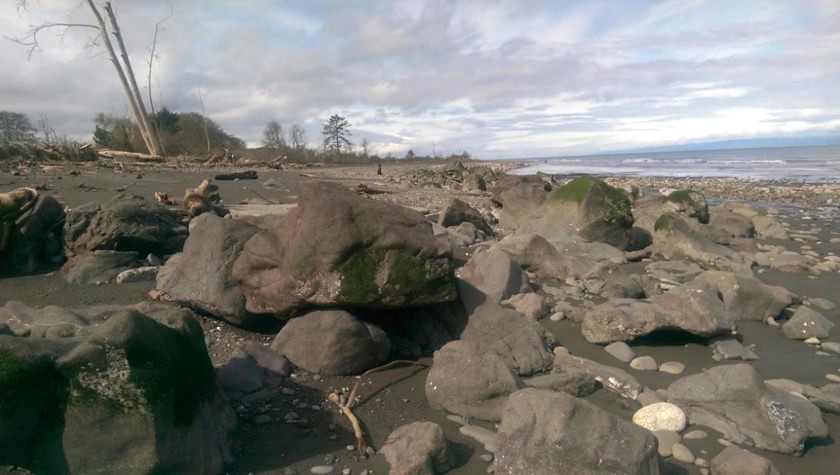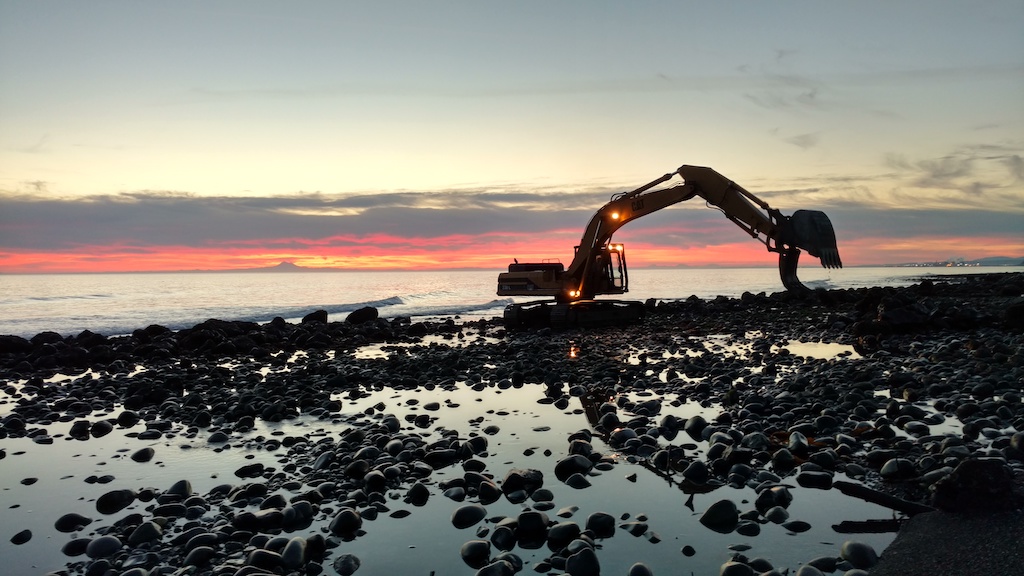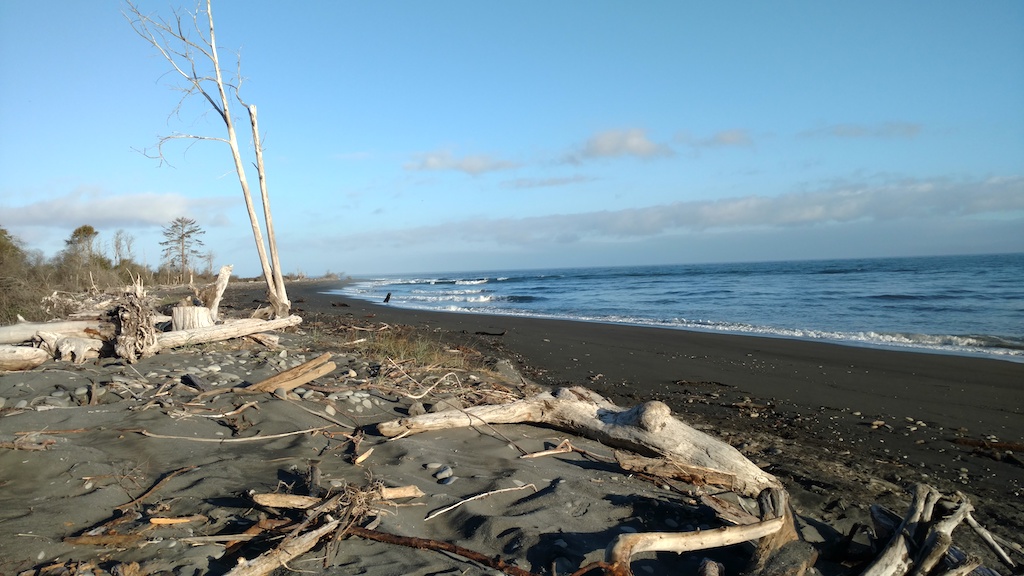The removal of the Elwha and Glines Canyon dams on the Elwha River has not only resulted in astounding changes to the environment, it has also provided great opportunities for scientists to better understand how the ecosystem functions. Researchers have studied delta erosion and development and how fish, mammals, invertebrates, and birds respond to a return to more natural processes. And, in new data, they are seeing what can happen with the removal of shoreline armoring. “It’s like watching a highlight reel, sped up,” says Jamie Michel, a nearshore biologist with the Coastal Watershed Institute.
Over the past several years, Michel has been involved in a nearshore restoration project about a mile east of the Elwha River delta. The project began in 2015 when Michel and CWI began to study the effects of a ¾-mile long armored wall built of large rip rap and concrete slabs sometime in the 1950s. The seawall had been constructed to protect an artificial lake, Beach Lake, which had formed from a lagoon that existed prior to construction of the dams. Because the dams drastically reduced the supply of sediment to the beach, the lagoon had morphed into a lake.
The wall, however, did not stop erosion from taking place and over the subsequent decades, the beach and armoring suffered. By 2006, the lake and the beach could no longer withstand the decades of degradation, and sometime during the year most of the lake drained out, probably because much of the seawall was littered across two acres of beach. Little changed until 2014, when sediment that had been trapped by the Elwha River dams began to reach the delta.





